Fujifilm X100F
The one that got away

Like so many other Fujifilm shooters, I have a bit of a history with the X100 cameras. I missed the original, but the X100S was a turning point in my photography. By the time the X100T arrived, I was already shooting differently, had already ditched my DSLR, and was making more photos I was proud of.
Then the X-Pro 2 came along.
Suddenly, I had a camera that fit my usage like a glove, carried over the unassuming look of the X100 series, and pushed its image quality into an entirely different realm. Somewhere along the line, I also experienced how green the grass was on the Olympus side of things with the PEN-F.
When the X100F appeared on the scene this year, it had much more serious competition to contend with. And even though it’s the ideal camera for many photographers, it didn’t measure up for me.
Sibling Rivalry
Fundamentally, the X100F’s appeal was undone by the X-Pro 2.
I had the great privilege of being among the first photographers in the world to get their hands on the X-Pro 2, shooting incognito with it over the winter break before its release. I fell in love. Once it hit the market, I bought mine immediately (I am not an X-Photographer and do not receive free cameras).
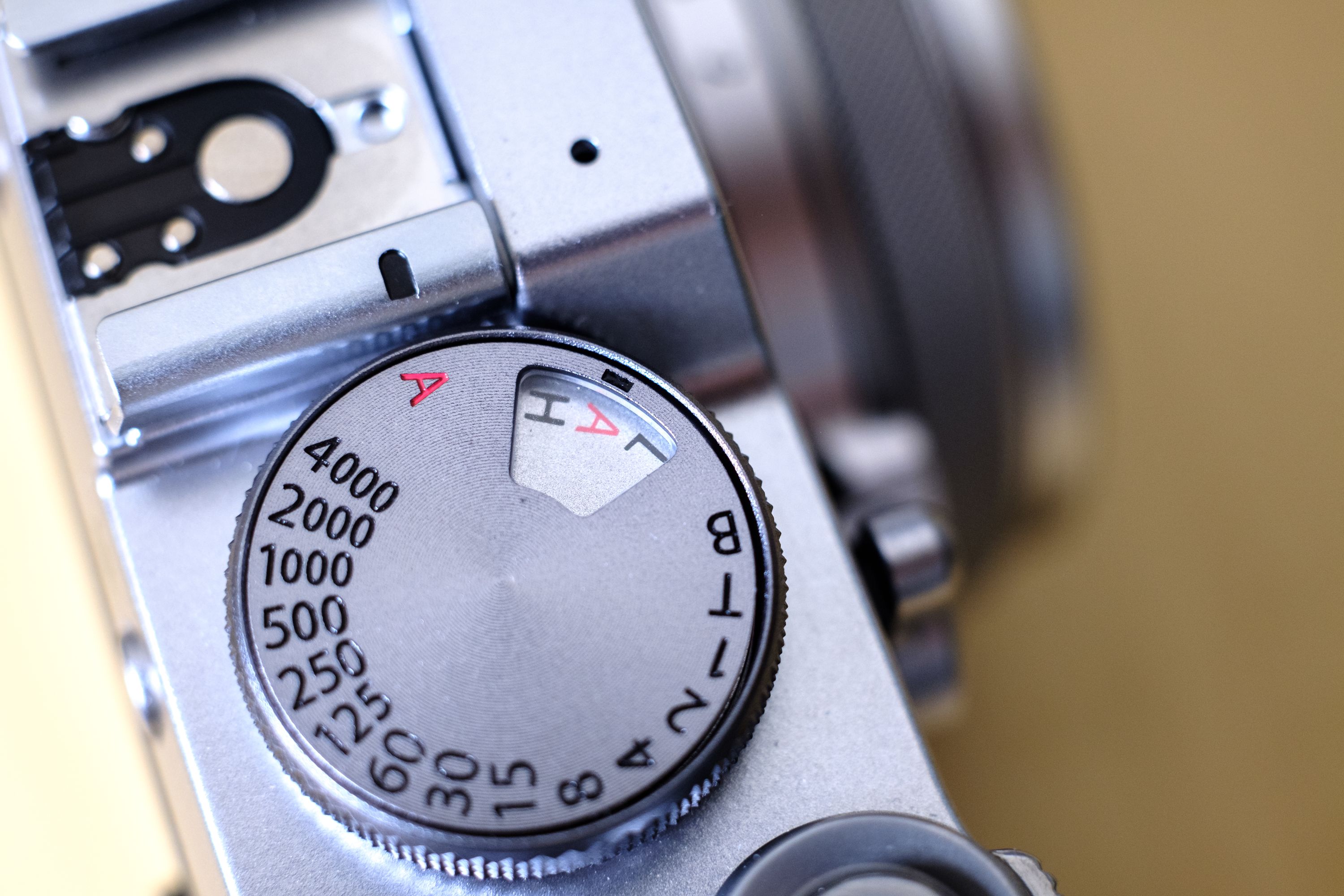 The X100F inherits the divisive ISO dial setup of its larger sibling, a control that I continue to find perfectly useable.
The X100F inherits the divisive ISO dial setup of its larger sibling, a control that I continue to find perfectly useable.
I’ve seen tens of forum threads, Reddit discussions, and social media posts debating the relative merits of owning an X-Pro 2 with a 23mm lens or simply buying the X100F. Having been in the happy position of owning both, I can only share my experience in the hopes of helping others figure out what makes sense for them.
Since the imaging pipeline between X-Pro 2 and X100F is now essentially identical (a few firmware quirks like the lack of C-AF settings and inability to name custom settings notwithstanding), it came down to other factors.
23mm Options
Doubt began creeping in when a I did a 23mm lens shoot-out with a fellow Fujifilm shooter. He owns the 23mm f/1.4 and, at the time, I had my 23mm f/2 review unit in on my X-Pro 2, along with my X100F.
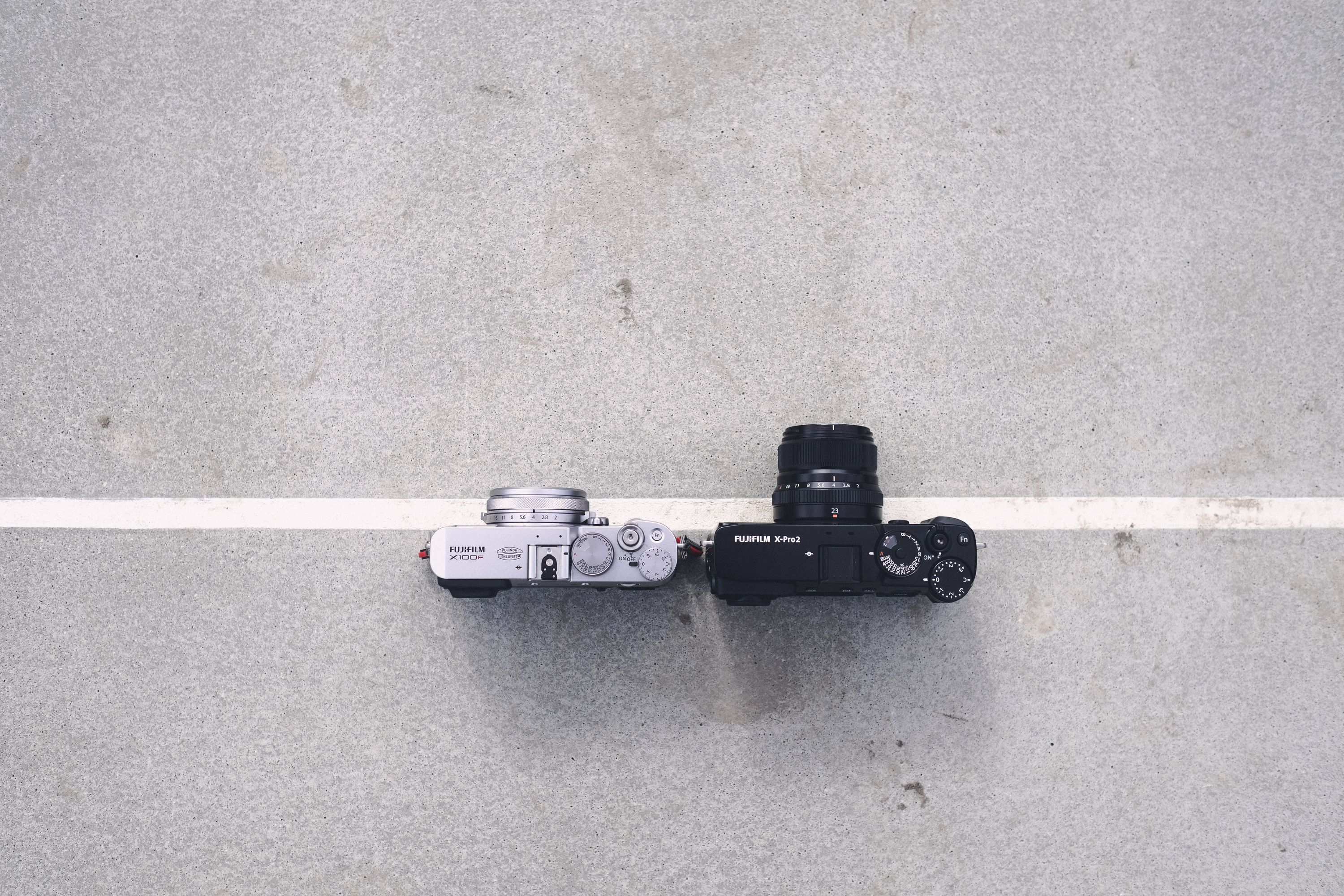 X100F on the left, and X-Pro 2 + 23mm ƒ/2 on the right.
X100F on the left, and X-Pro 2 + 23mm ƒ/2 on the right.
We decided to do some basic comparative shooting around our neighbourhood, and in doing so and comparing the images, I came to the conclusion that the 23mm f/2 on the X100F was the weakest of the three lenses.
Now, before I continue, I should say that the results were not clinical tests, nor did we have multiple units of each on hand to determine to what extent copy variation affects results. It’s also important to remember that this is only gear, and that any of the three options we tested are more than capable of producing exceptional images in the hands of a skilled photographer.
Here are a few 100% crops from the session:
 The X100F shot wide open at ƒ/2 (left) and stopped down to ƒ/4 (right). It has a very similar rendering to its XF brother on my X-Pro 2.
The X100F shot wide open at ƒ/2 (left) and stopped down to ƒ/4 (right). It has a very similar rendering to its XF brother on my X-Pro 2.
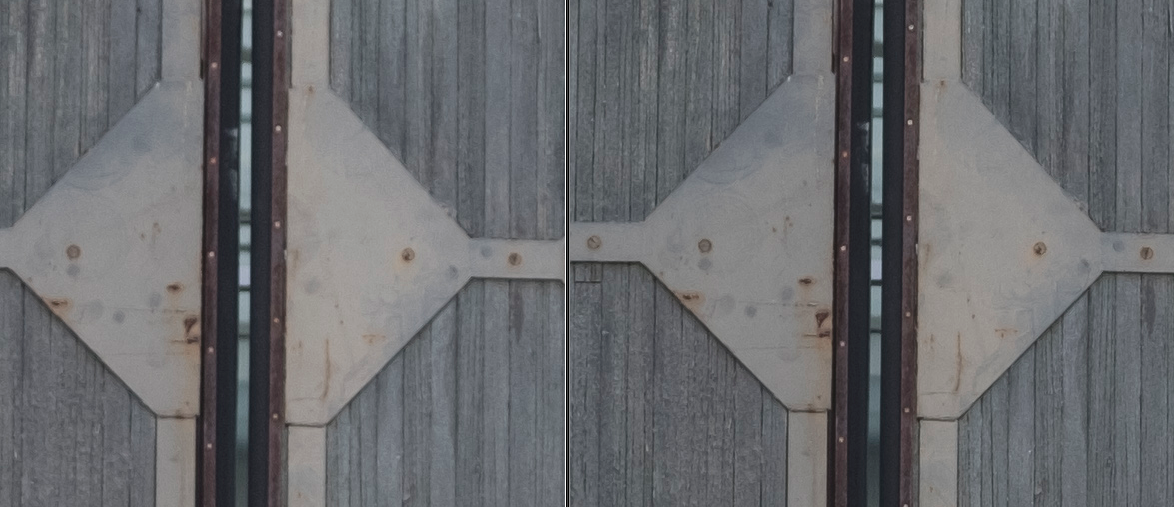 The XF 23mm ƒ/2 wide open at ƒ/2 (left) and stopped down to ƒ/4 (right). The ƒ/2 is softer than the ƒ/1.4, but it’s more contrasty than its larger sibling, which makes up for it to a certain extent.
The XF 23mm ƒ/2 wide open at ƒ/2 (left) and stopped down to ƒ/4 (right). The ƒ/2 is softer than the ƒ/1.4, but it’s more contrasty than its larger sibling, which makes up for it to a certain extent.
 The XF 23mm ƒ/1.4 wide open at ƒ/1.4 (left) and stopped down to ƒ/2 (right). You can see that, while the 1.4 is softer wide open, by the time you stop down to ƒ/2 to match the widest aperture of the ƒ/2 lens, it already exceeds it in sharpness. By ƒ/4 it’s clearly sharper, especially at the edges of the frame.
The XF 23mm ƒ/1.4 wide open at ƒ/1.4 (left) and stopped down to ƒ/2 (right). You can see that, while the 1.4 is softer wide open, by the time you stop down to ƒ/2 to match the widest aperture of the ƒ/2 lens, it already exceeds it in sharpness. By ƒ/4 it’s clearly sharper, especially at the edges of the frame.
With that out of the way, here were my impressions:
- The 23mm f/1.4 is noticeably sharper at all apertures than either of the f/2 lenses, and provides corner sharpness right from the widest apertures—this is not surprising since it’s the largest and most expensive of the three, but it’s worth stating
- The f/2 lens on my X-Pro 2 was the fastest to focus, but the difference between it and the f/1.4 was significantly less than I anticipated; the 1.4 holds its own and is quick enough that I would not factor AF speed into my purchasing decision
- The X100F focuses noticeably faster than its predecessors, and while it’s not as quick as the X-Pro 2 + 23mm f/2 combo, it’s close, and focus is more confident than it used to be (nowhere near as much hunting, especially in low light)
- The 23mm f/2 produces significant vignetting wide open, which wasn’t something I was looking for but is so prominent that it distracted me.
- The X100F retains its characteristic softness when shooting close up subjects with wide apertures. This either bothers you or it doesn’t, but it’s something to be aware of
- The 23mm f/2 exhibits a milder version of this effect
- Of the three options, only the 23mm f/2 on the X-Pro 2 offers weather sealing
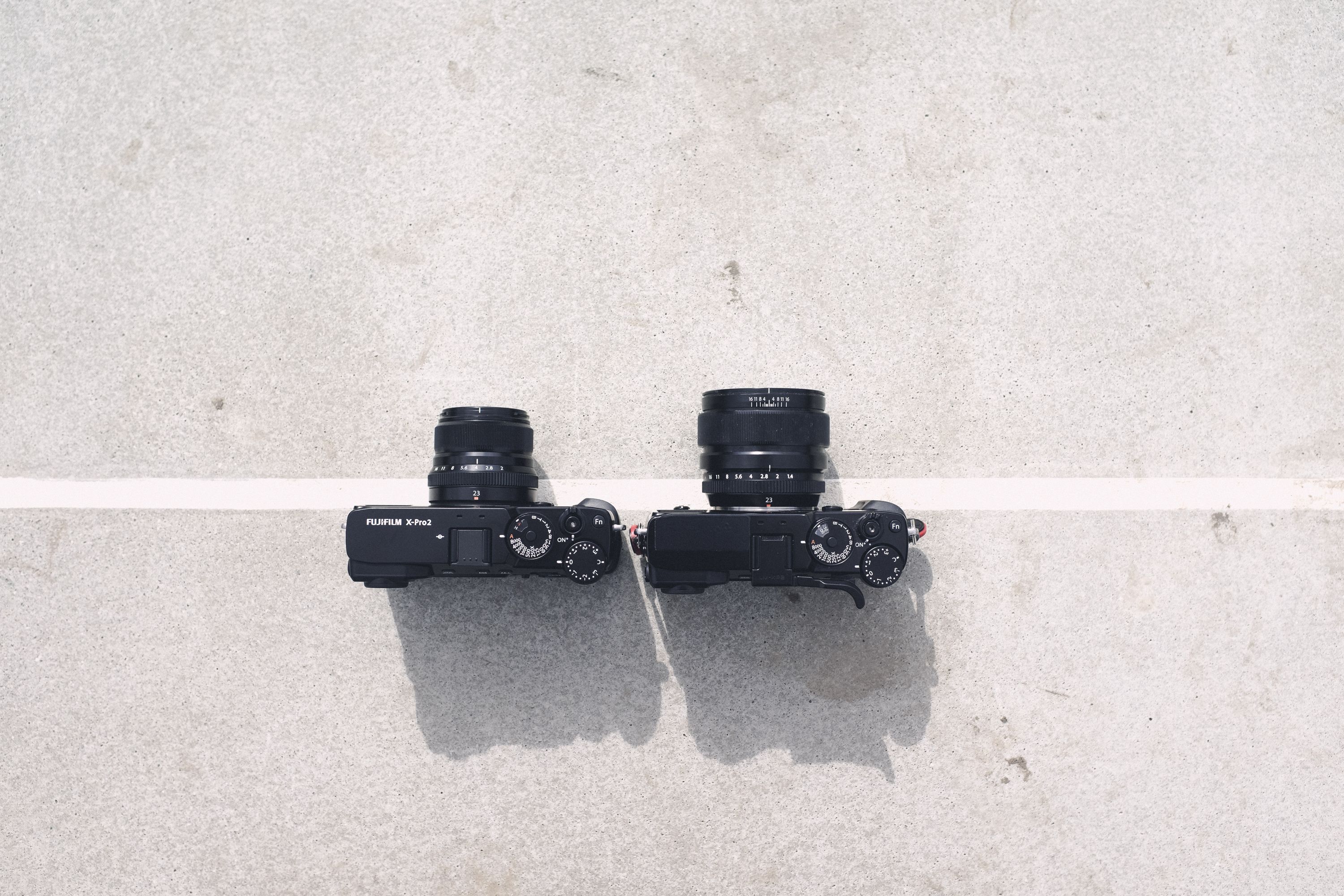 The interchangeable lens options: the 23mm ƒ/2 (left), and 23mm ƒ/1.4 (right) mounted on X-Pro 2 bodies (the right X-Pro 2 has a ThumbsUp grip attached).
The interchangeable lens options: the 23mm ƒ/2 (left), and 23mm ƒ/1.4 (right) mounted on X-Pro 2 bodies (the right X-Pro 2 has a ThumbsUp grip attached).
Overall, the test served to confirm my suspicions: that the X100F is the weakest option, optically, but makes up for it in form factor and the ability to have a camera that’s entirely built around that focal length. The unique rendering is also part of its charm, and I’m not convinced that an optically superior 23mm lens would improve upon its imaging potential.
It remains exceptional at the working distances implied by a 35mm equivalent field of view, and the lens’ design seems to handle the increased resolution burden of the X-Trans III sensor without collapsing. You’ll get sharp, detailed results under most common shooting circumstances.
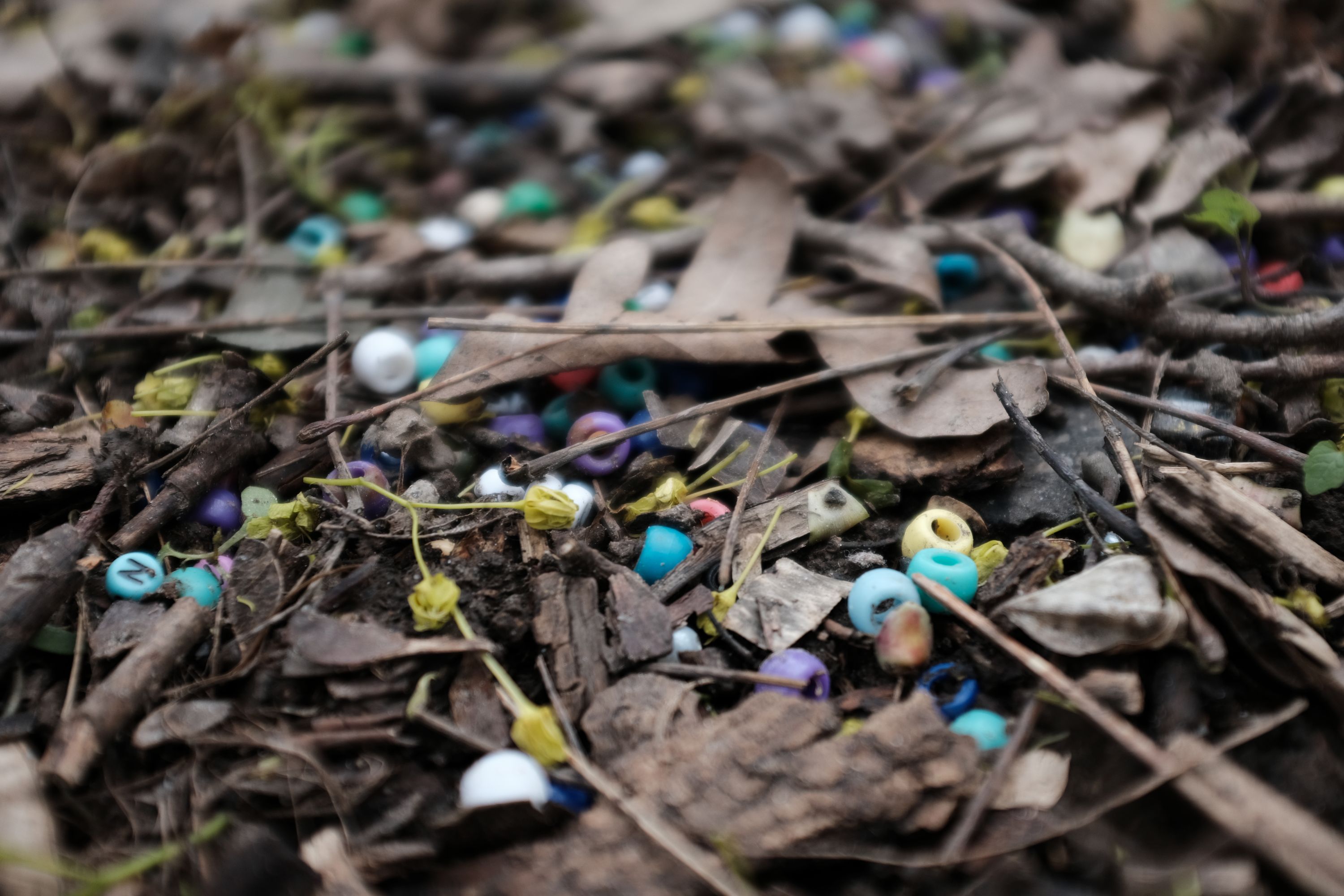 Here’s a fairly ugly shot that’s untouched—straight from the camera—to showcase the soft, glowy look you’ll get when shooting up close with the X100F.
Here’s a fairly ugly shot that’s untouched—straight from the camera—to showcase the soft, glowy look you’ll get when shooting up close with the X100F.
Regarding its sharpness up close, the reason I count this against it is that the effect also applies when using the conversion lenses. So if you wanted to get a nice close portrait with the TCL-X100 for a 50mm equivalent look, you’re going to run into the same issue.
This is by no means a deal breaker though, just something to be aware of and to work around. Every camera has its quirks.
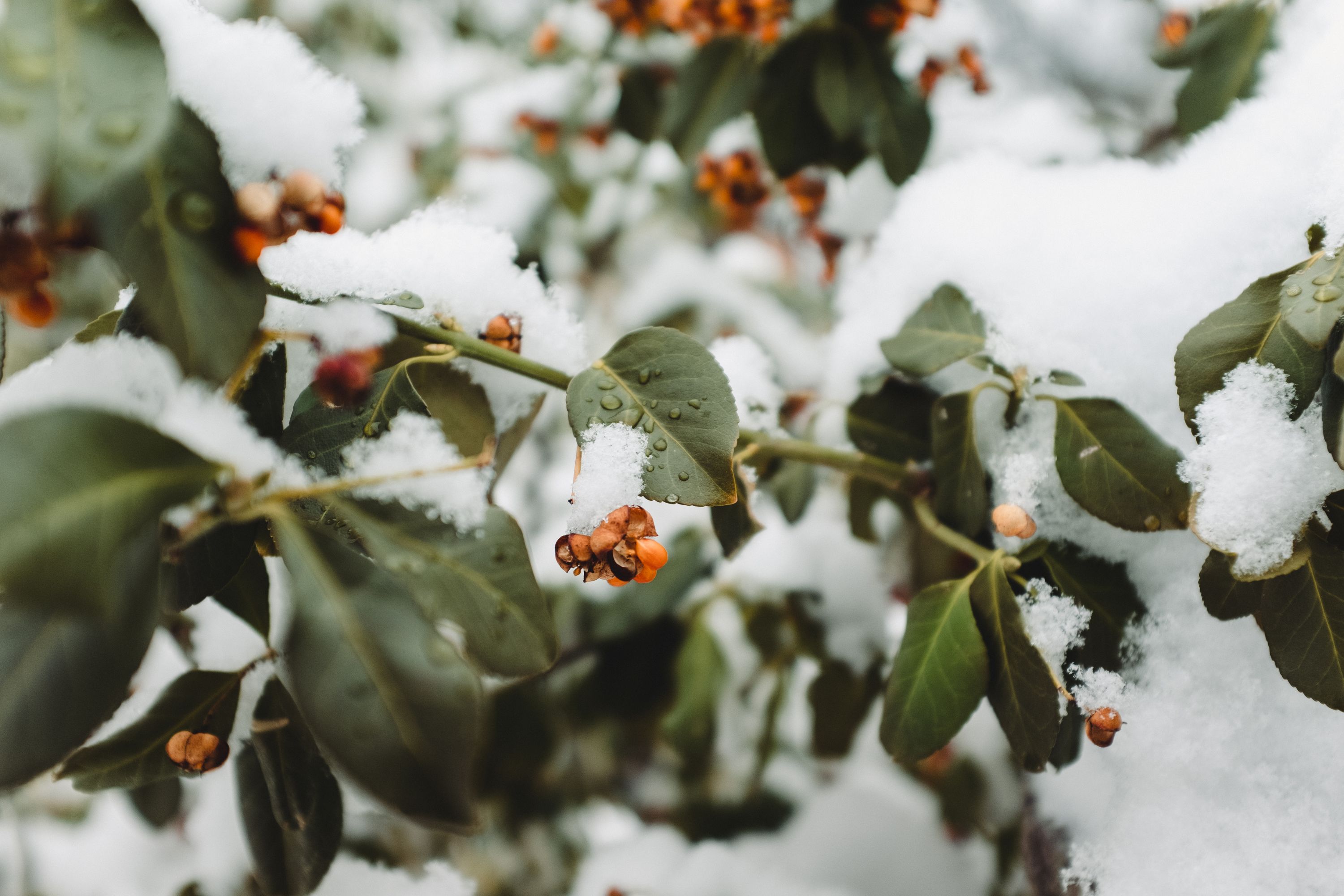 All it takes is a bit more distance between you and your subject to allow detail to come flooding back in.
All it takes is a bit more distance between you and your subject to allow detail to come flooding back in.
The 1.4 is the better lens in terms of optical performance, but also character and subjective rendering. I found it to be the most pleasing in all respects, including ergonomics: the size is a good fit for the X-Pro 2 and the manual focus clutch offers a superior mechanical experience to the other two. The X100F in particular has too thin a focus ring to be comfortable for my hands, despite the revised grip pattern on the ring.
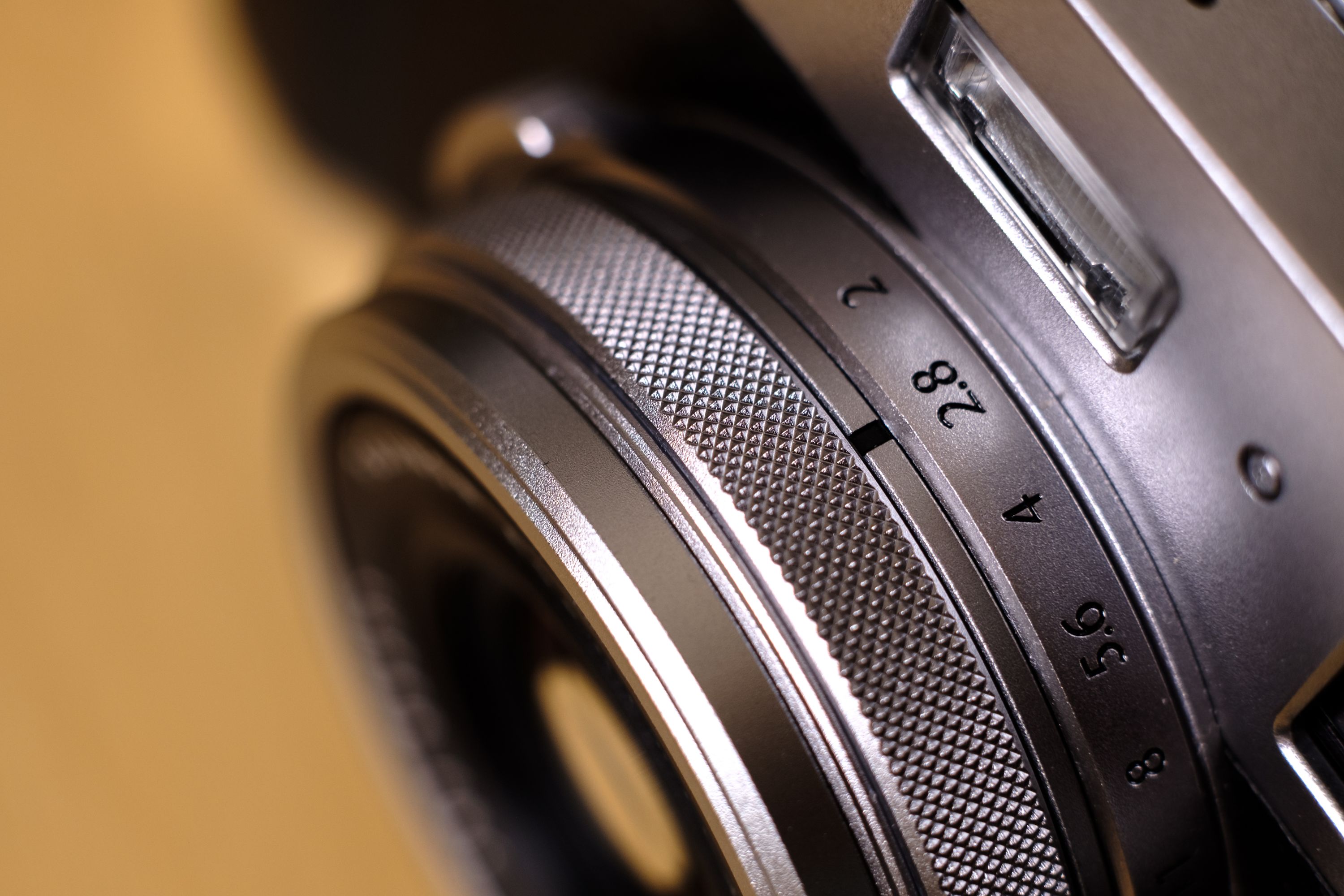 The manual focus ring has a nice grippy texture to it, but it’s still too narrow for me to consider it comfortable in use.
The manual focus ring has a nice grippy texture to it, but it’s still too narrow for me to consider it comfortable in use.
The only downside of the 1.4 is its lack of weather sealing, and while you can argue that weather sealing in general is a myth, I appreciate the peace of mind that comes from knowing I don’t have to panic if it starts to rain while I’m out shooting.
For my own usage, it became clear that given the three options I would only ever reach for the f/2 or f/1.4 on my X-Pro 2. Not a happy day for the X100F.
 This shot, which is worth seeing in print to appreciate its resolution, is so incredibly detailed that I was amazed to have shot it handheld with fading light in the woods. Make no mistake: as long as you’re in its sweet spot, the X100F can dish out more sharpness than you’ll know what to do with.
This shot, which is worth seeing in print to appreciate its resolution, is so incredibly detailed that I was amazed to have shot it handheld with fading light in the woods. Make no mistake: as long as you’re in its sweet spot, the X100F can dish out more sharpness than you’ll know what to do with.
Size
I began to ask myself: in what circumstances would I find the X-Pro 2 + 23mm combo too large or conspicuous to bring with me? When would I reach for the X100F instead?
Unexpectedly, I couldn’t come up with any.
 The X100F is portable and easy to carry with you everywhere, but…so is the X-Pro 2.
The X100F is portable and easy to carry with you everywhere, but…so is the X-Pro 2.
I considered the obvious choices: social gatherings, casual outings, travel, etc. But in all those cases, I have very happily taken my X-Pro 2 and suffered no ill effects. I got the shots I wanted. I did not feel burdened.
 Several video shoots have provided an opportunity to use the X100F for behind-the-scenes shots, but again-the X-Pro 2 was there too and was no more conspicuous or unwieldy.
Several video shoots have provided an opportunity to use the X100F for behind-the-scenes shots, but again-the X-Pro 2 was there too and was no more conspicuous or unwieldy.
A practical example: we threw a surprise party for Shannon’s birthday, and suddenly my apartment was a hive of happy friends. Perfect place to deploy the X100F, I thought. Sure enough, that was the kind of circumstance where the X100 series shines—I got some shots that I will cherish forever. Perfect, candid photos of my friends and loved ones.

But…I didn’t get them because I was using the X100F. I got them because everyone knows I’m a photographer. I got them because I was wielding the camera subtly (not surreptitiously, just respectfully). Had I been carrying a DSLR, I may have missed some—the difference in people’s reactions to that versus the look of the X-Pro 2 or X100F is very real. But while you and I can tell the difference between the X-Pro 2 and X100F at a glance, the vast majority of my subjects cannot.
So if I could have gotten my party candids just the same using my X-Pro 2, what was the X100F’s advantage?
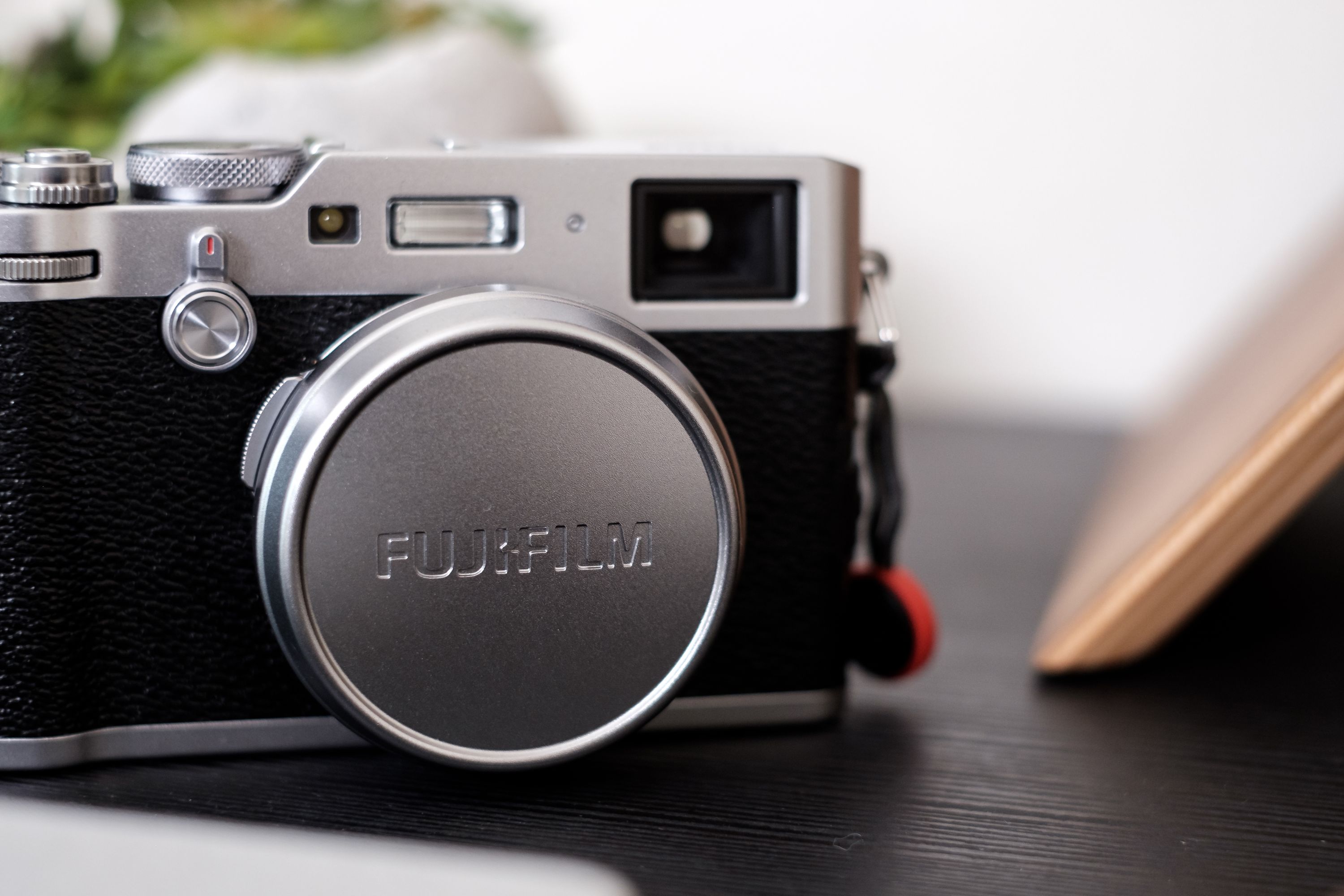 The push-on lens cap is great, but as with my previous X100 cameras, I took it off and stuck a filter on instead so I could be ready to shoot at the flick of a switch.
The push-on lens cap is great, but as with my previous X100 cameras, I took it off and stuck a filter on instead so I could be ready to shoot at the flick of a switch.
This was supposed to be the part of the review where I tell you that size is the X100F’s magic bullet. That it’s so tiny, just picking it up grants you a form of invisibility. That it’s so light as to be unnoticeable when slung over your shoulder over a long day of walking the city streets or forest paths.
But I can’t. I can’t tell you those things because they aren’t true in my experience.
Equipped with one of the “Fujicron” f/2 lenses (the 23, 35, and 50 trinity), the difference in weight between X-Pro 2 and X100F when slung over my shoulder is negligible.
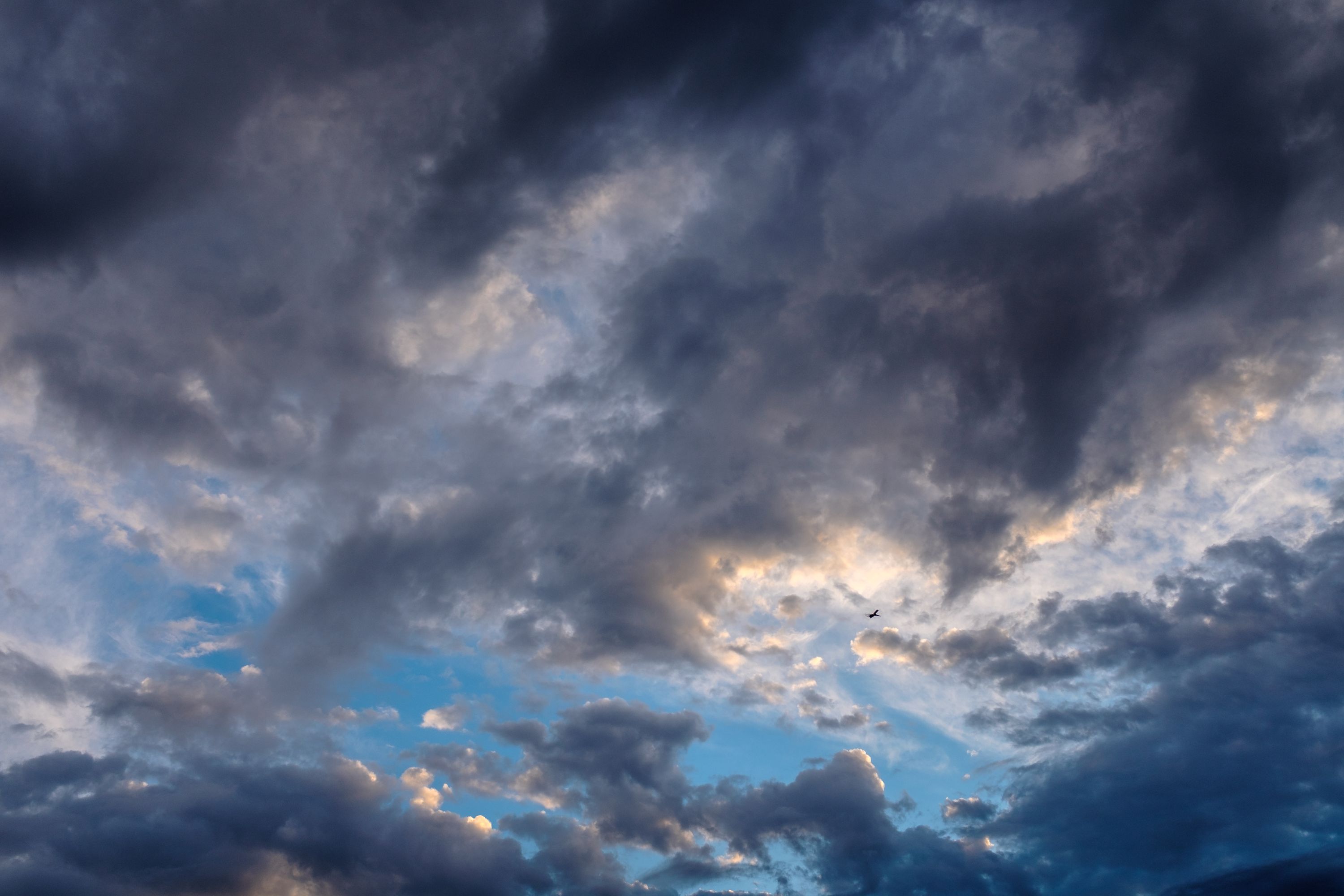 The X-Trans III sensor continues to impress, with gorgeous colours and a pleasing noise profile even as the light fades.
The X-Trans III sensor continues to impress, with gorgeous colours and a pleasing noise profile even as the light fades.
Finding its Niche
In the interest of fairness, I have to take a step back and judge the X100F on its own merits too.
While I have the opportunity to shoot both X-Pro 2 and X100F in parallel (and I know this is a popular combination for Fujifilm shooters, especially now that they share a battery), there are many folks for whom only one camera is in the cards.
It’s always been the case that the X100F is a niche camera. It has a few unique advantages that no other X Series camera can match, two of which come to mind immediately because they affect my usage:
- Built-in ND filter
- Leaf shutter
The former is a godsend for outdoor work. I can summon that 3-stop filter at the touch of a button (I keep my FN button beside the shutter set to toggle it) and shoot wide open in broad daylight if I need to.
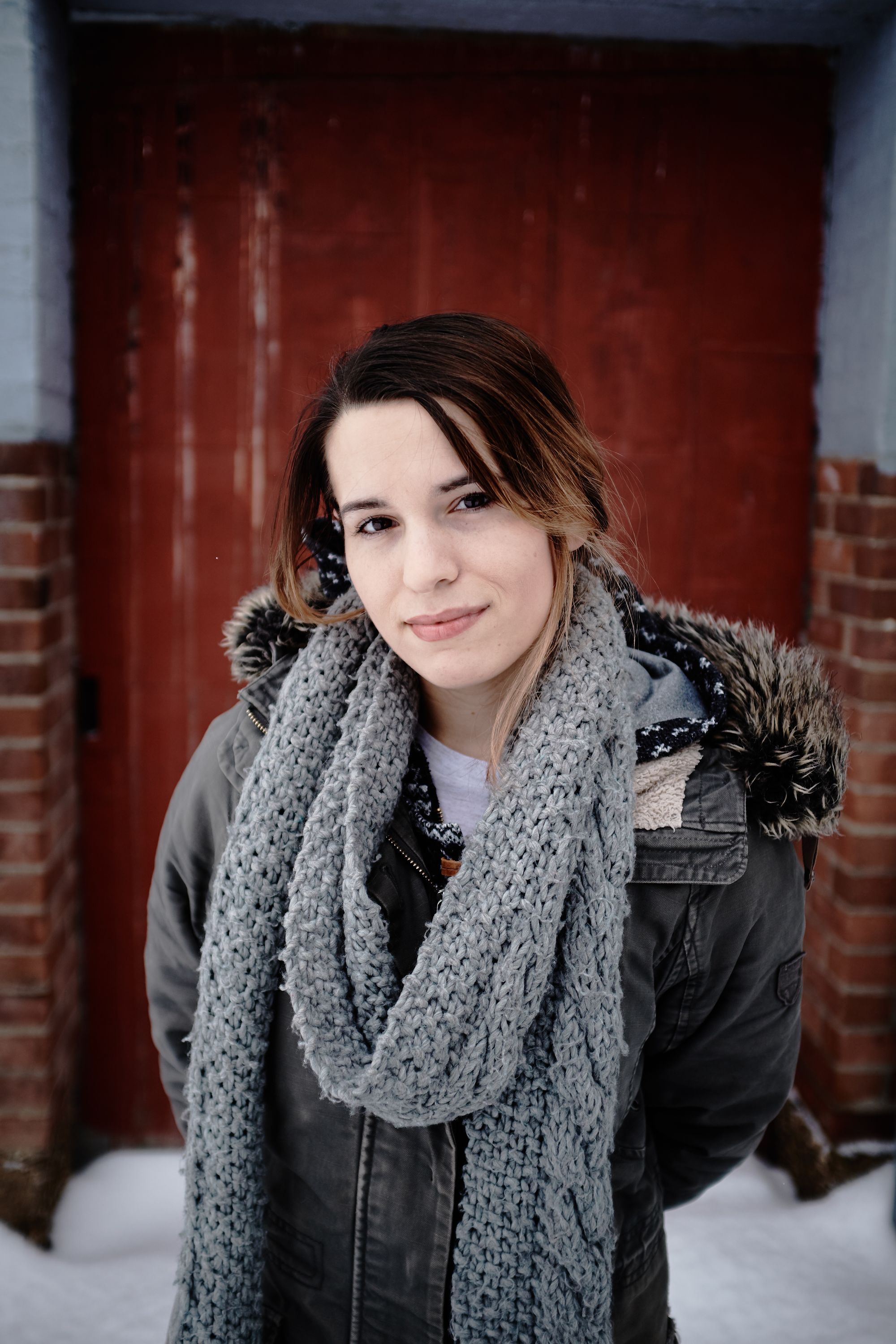 The ND filter allows you to keep a happy amount of bokeh in the shot with minimal hassle, even in the daytime.
The ND filter allows you to keep a happy amount of bokeh in the shot with minimal hassle, even in the daytime.
I’m only just beginning to appreciate the power of leaf shutters. Their main advantage is in the flexibility they offer to photographers working with strobes. Higher flash sync speeds mean less effort required to overpower ambient light, allowing for wider apertures and shallower depth of field exposures without resorting to ND filters (which can affect AF performance).
While those are both significant advantages, they don’t ultimately overcome the camera’s limited shooting envelope for the things I do.
In the studio, for instance, I would almost never reach for a 35mm equivalent focal length, so even though the leaf shutter has its advantages, they’re stuck on a body/lens combination that I wouldn’t gravitate toward in that shooting context.
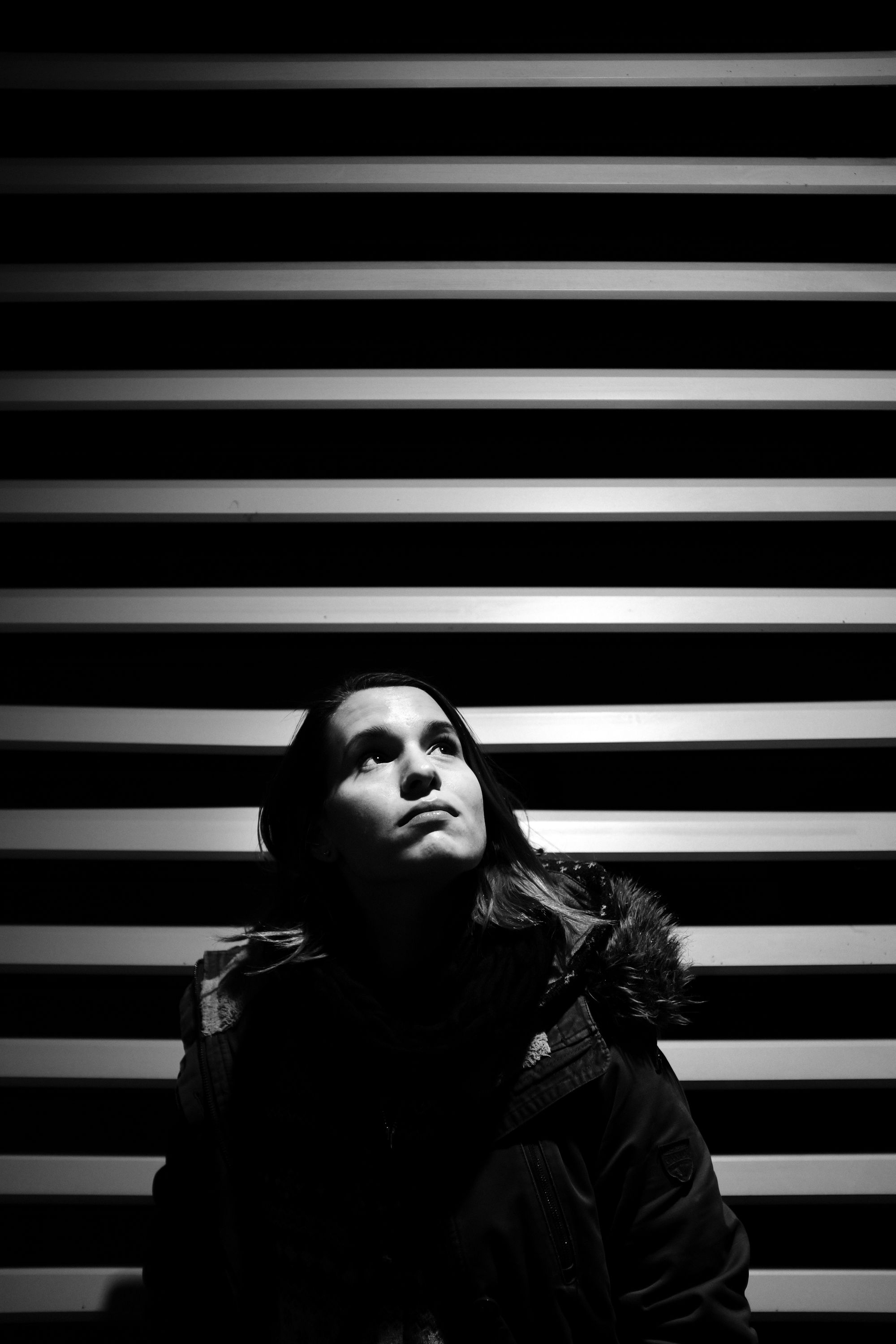 It may not be my favourite focal length for portraiture, but I’ve still gotten great results with it.
It may not be my favourite focal length for portraiture, but I’ve still gotten great results with it.
Friend Zone
The X100F and its X Series siblings are closer than they’ve ever been.
They share a battery now (finally), and the control layout is very familiar across the whole family. I was overjoyed to see the focus selection joystick make its way over, and the way the buttons have been consolidated on the right side of the screen is terrific. Startup time is now just as fast on the X100F as it is on the X-Pro 2 (make sure High performance is set in the menu).

And yet my love for it has cooled; the role it filled in my setup is now handled by the X-Pro 2. Over my time with the X Series, the X100 component has become redundant.
I spent weeks with the review unit, and at the end of that period I bought my own—I guess out of habit?—even though I had a suspicion that things had changed. I don’t like jumping to conclusions, hence the patient approach to reviews in general on this site.
It’s a difficult admission, but the truth is that the X100F is not for me.
Conclusion
As with every new generation, the X100F is a refined version of its predecessor. It is the perfect X100 camera, but whether or not that’s the perfect camera for you is complicated.
If you’re already an X100 shooter, the F brings enough improvements to the table to be worth an upgrade regardless of which X100 you’re currently shooting (yes, even the T). Having X-Trans III performance in a tiny body is magnificent, and the level of precision and polish in this generation is fantastic.
But if you already have an X-Pro 2 or X-T2, think carefully about what specific advantages you’re hoping it will confer. Because if you’re like me, the theory doesn’t measure up to reality anymore.
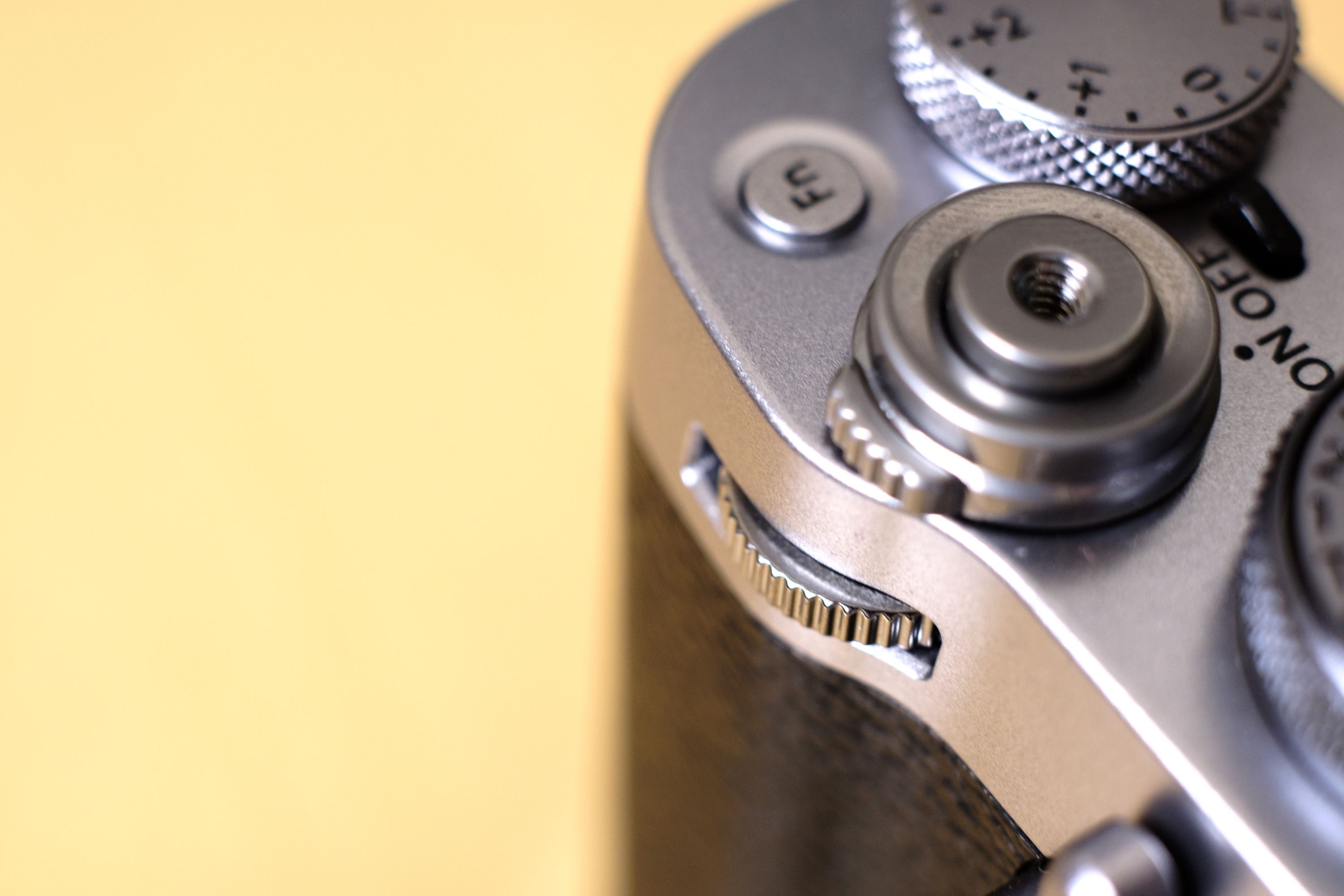 The X100F remains a unique, powerful, and focused photographic tool. One that I think every photographer should experience, even if it doesn’t end up being a keeper.
The X100F remains a unique, powerful, and focused photographic tool. One that I think every photographer should experience, even if it doesn’t end up being a keeper.
X-T2 owners can grab an X100F as a secondary body that covers the rangefinder shooting experience and gives them a tool that’s less threatening for candid work. It’s a much tougher sell for X-Pro 2 owners, who already own a more capable, more durable, more comfortable tool. It will come down to size, leaf shutter benefits, and some of the mystique of the X100 series.
I would have called an X100 of some sort my desert island camera a couple of years ago. But somehow its latest incarnation—meaningfully improved in every way—no longer earns that spot.
If I’m to be stuck on an island, it’ll be with the X-Pro 2. And, you know, food I hope.